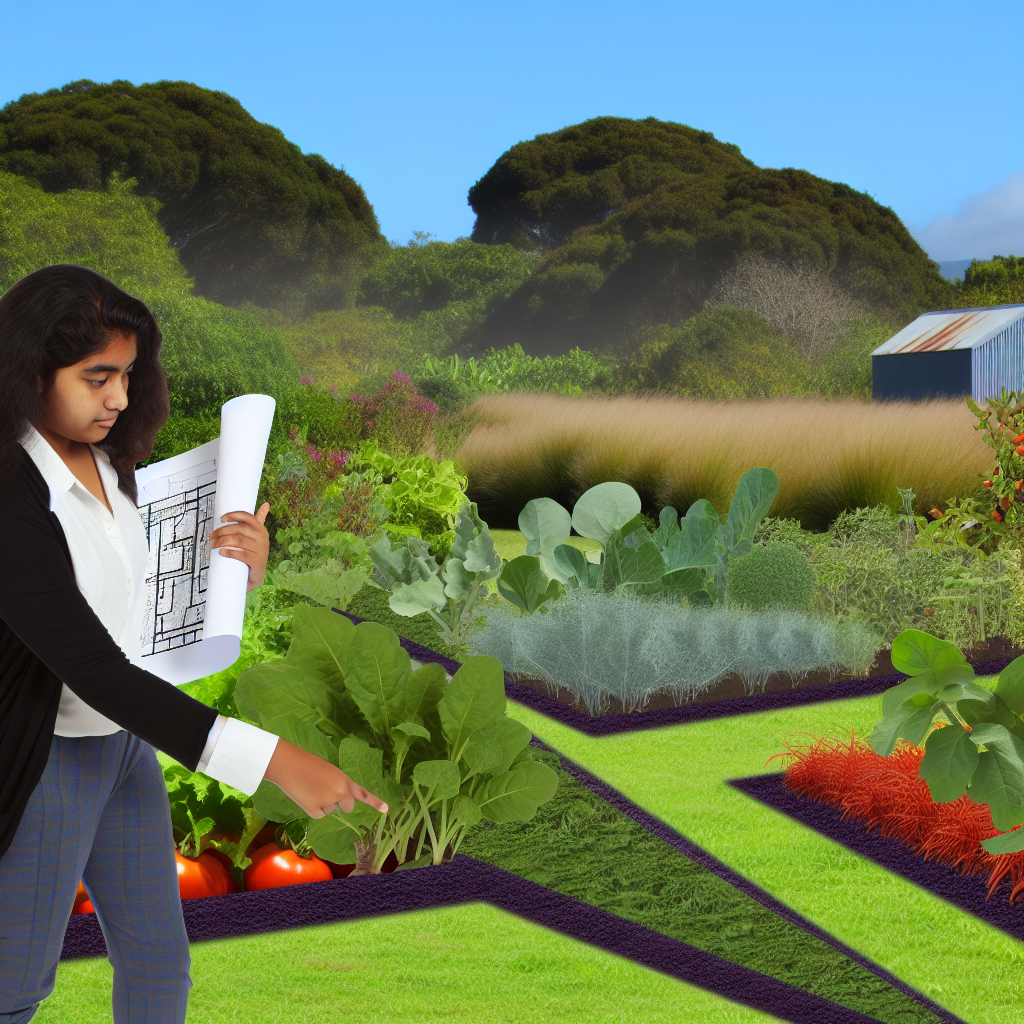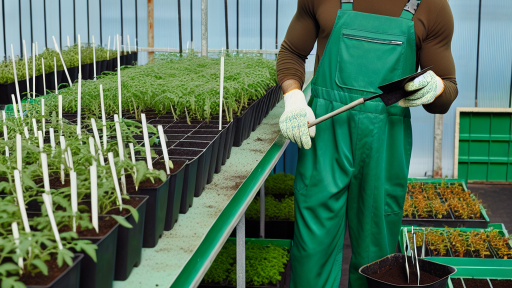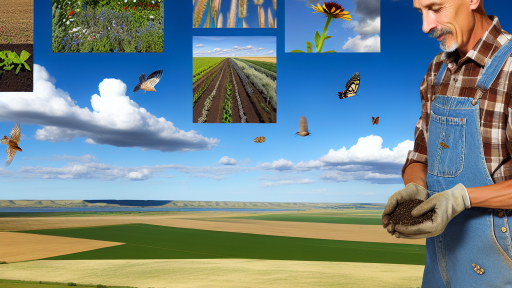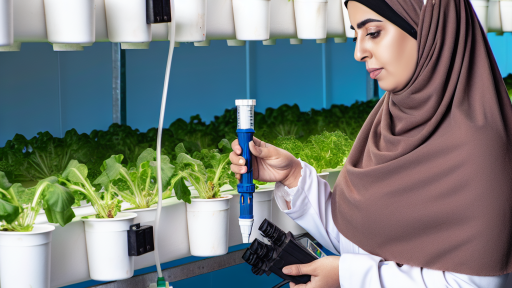Introduction to Edible Landscapes
Edible landscapes combine aesthetics with functionality.
They transform typical gardens into productive spaces.
These landscapes feature a variety of plants such as fruits, vegetables, and herbs.
Moreover, they promote sustainable living by reducing reliance on store-bought food.
Definition of Edible Landscapes
Edible landscapes refer to gardens designed for food production.
They incorporate both edible and ornamental plants for visual appeal.
This approach enhances outdoor spaces while providing nutritious food.
Importance of Edible Landscapes
Edible landscapes play a significant role in food security.
They support biodiversity by hosting various plant species.
Additionally, they reduce the carbon footprint associated with transportation.
Incorporating such designs can also improve mental health.
Gardening encourages physical activity and mindfulness practices.
Furthermore, these landscapes foster community interaction.
They create opportunities for local food-sharing and education.
Key Principles of Landscape Design in Edible Gardens
Understanding Functionality
Every garden serves a purpose beyond aesthetics.
Transform Your Agribusiness
Unlock your farm's potential with expert advice tailored to your needs. Get actionable steps that drive real results.
Get StartedConsider the main functions of your edible landscape.
Workspaces, pathways, and planting areas all require careful thought.
Designing for ease of movement enhances enjoyment.
Additionally, ensure accessibility for all users.
Emphasizing Compatibility
Your garden plants should coexist harmoniously.
Select varieties that support each other’s growth.
Utilize companion planting strategies to maximize yield.
For example, pairing tomatoes with basil promotes flavor and growth.
Moreover, consider the spacing and light needs of your plants.
Incorporating Aesthetics
Visual appeal is vital in an edible landscape.
Choose colors, textures, and forms that inspire action.
Consider using ornamental plants alongside edible varieties.
This approach adds beauty while integrating utility.
Furthermore, seasonal variations can enhance interest throughout the year.
Planning for Sustainability
Sustainability should guide your design choices.
Opt for native and drought-tolerant plants where possible.
Using organic practices enriches soil health and biodiversity.
Integrate rainwater collection systems to support irrigation.
Moreover, create habitats to attract beneficial insects.
Designing for Maintenance
Consider how much time you can dedicate to garden upkeep.
Design low-maintenance gardens by grouping plants with similar needs.
Utilize mulch and ground cover to suppress weeds and retain moisture.
Plan your layout for easy access during harvesting or pruning.
Additionally, streamline your planting strategies for efficiency.
Showcase Your Farming Business
Publish your professional farming services profile on our blog for a one-time fee of $200 and reach a dedicated audience of farmers and agribusiness owners.
Publish Your ProfileFactors to Consider When Designing Paths
Accessibility
Accessibility is crucial in edible landscapes.
Paths should accommodate all users, including those with disabilities.
Choose materials that provide traction and stability.
For instance, gravel or mulch works well in many environments.
Consider the path’s width to allow for easy navigation.
Methods like sensory-friendly design enhance user experience.
Intersections should be clear to prevent confusion.
Ensure signage is readable, with contrasting colors for visibility.
Aesthetics
Aesthetic appeal enhances the enjoyment of edible landscapes.
Choose colors that blend with natural surroundings.
Incorporate plants that offer visual interest along the path.
Pathways can feature different textures to create a unique experience.
Consider seasonal changes in plants for year-round beauty.
Design should harmonize with the overall garden layout.
Additionally, installing decorative elements can elevate the space.
Think about how paths will look from various viewpoints in the landscape.
Functionality
Functionality is essential when designing paths.
Paths should provide easy access to key areas of your garden.
Consider traffic flow to ensure efficient movement.
Use materials that withstand weather and wear over time.
Paths must be easy to maintain for ongoing usability.
Include features such as seating for resting spots during exploration.
Designing paths for multiple uses will maximize your landscape’s potential.
Lastly, think about integrating pathways with surrounding plants for synergy.
Learn More: Selecting Heirloom Tomatoes for Your Farm
Types of Path Materials
Natural Options
Natural path materials enhance the look of edible landscapes.
They blend seamlessly with plants and garden features.
Common natural materials include stone, gravel, and wood chips.
Stone paths provide durability and create a timeless appeal.
Gravel paths are easy to create and allow for good drainage.
Wood chips offer a soft appearance and can improve soil quality.
Recycled Materials
Recycled path materials promote sustainability in gardening.
These materials can include reclaimed bricks and repurposed concrete.
Using recycled items reduces waste and environmental impact.
Bricks add a classic touch and can be laid in various patterns.
Concrete slabs, when reused, often come at a lower cost.
Consider integrating old railroad ties for a rustic charm.
Durable Options
Durable path materials ensure longevity and low maintenance.
Common choices include permeable pavers and asphalt.
Permeable pavers allow water to seep through, reducing runoff.
Showcase Your Farming Business
Publish your professional farming services profile on our blog for a one-time fee of $200 and reach a dedicated audience of farmers and agribusiness owners.
Publish Your ProfileAsphalt provides a smooth surface and can withstand heavy foot traffic.
Another option is resin-bound gravel, combining aesthetics with durability.
These materials can withstand various weather conditions effectively.
Choosing the Right Material
Selecting the right path material depends on usage and design.
Think about foot traffic and accessibility when choosing.
Consider the local climate and drainage needs of your landscape.
Ultimately, aim for a balance between function and aesthetics.
Experimenting with combinations can create unique pathways.
You Might Also Like: Top Organic Farming Techniques for Beginners
The Role of Paths in Garden Workflow
Enhancing Maintenance
Paths play a crucial role in garden maintenance.
They provide easy access to different parts of the garden.
This accessibility reduces time spent on upkeep tasks.
Properly designed paths minimize soil compaction.
Additionally, they help prevent damage to plants.
For instance, gravel or mulch paths absorb water and reduce mud.
Using non-toxic materials for paths supports organic practices.
Increasing Harvesting Efficiency
Paths also streamline the harvesting process.
With clear routes, gardeners save valuable time during harvest.
This efficiency allows frequent checking of ripe produce.
Moreover, paths reduce the risk of trampling crops.
Carefully planned paths enhance airflow among plants.
Good airflow prevents fungal diseases and promotes plant health.
Optimizing Workflow Layout
Designing paths carefully optimizes the garden layout.
This design defines specific zones for growing different plants.
A well-organized layout makes it easier to rotate crops.
Furthermore, visual pathways improve the overall aesthetic of the garden.
This visual appeal can encourage visiting and learning opportunities.
As a result, community engagement in gardening increases.
Uncover the Details: Maintaining Genetic Diversity Through Seed Saving

Incorporating Design Elements: Curves, Patterns, and Borders in Pathways
The Importance of Path Design
Pathways play a crucial role in edible landscapes.
They guide visitors through the garden and highlight features.
Using thoughtful design can enhance the experience.
Curved Pathways
Curved pathways create a sense of flow and movement.
They invite exploration and curiosity.
Curves can soften the harsh lines of a garden.
Incorporating curves helps blend pathways with natural elements.
Patterned Surfaces
Patterns can add visual interest to pathways.
Using stones or bricks in unique arrangements engages the eye.
Consider geometric designs or floral motifs for a playful touch.
Patterns can also indicate specific garden zones or functions.
Showcase Your Farming Business
Publish your professional farming services profile on our blog for a one-time fee of $200 and reach a dedicated audience of farmers and agribusiness owners.
Publish Your ProfileDefining Borders
Borders provide structure and separation between garden areas.
They can be made from various materials, like wood or stone.
Well-defined borders can enhance the overall aesthetic.
They also protect plants from foot traffic.
Integrating Edible Plants
Incorporating edible plants along pathways offers benefits.
They can create a sensory experience with colors and scents.
Examples include herbs, berry bushes, and flowering plants.
These plants attract pollinators, enhancing biodiversity.
Maintaining Accessibility
Pathways must be accessible for all users.
Consider the width and surface materials carefully.
They should remain clear of obstructions to ensure safety.
Smooth, durable materials work well for less mobility.
Utilizing Color and Texture
Color can influence the mood and ambience of a pathway.
Consider planting colorful flowers or using vibrant stones.
Textures can also enhance visual interest and appeal.
Mixing smooth and rough surfaces creates dynamic experiences.
Delve into the Subject: Essential Tools for Successful Organic Gardens
Seasonal Considerations: Designing Paths for Year-Round Use
Understanding Seasonal Changes
Every season brings unique challenges and opportunities for landscape design.
Winter may cover paths with snow.
Summer can bring heat and drought.
Understanding these variations helps in selecting appropriate materials and plants.
Path Materials and Construction
Selecting durable materials is crucial for year-round usability.
Consider permeable options to manage rainwater in spring.
In winter, non-slip surfaces enhance safety on icy paths.
Use natural stones or gravel that adapt well to seasonal changes.
Plant Selection for Seasonal Interest
Incorporate plants that offer visual appeal throughout the year.
Choose flowering plants for spring that attract pollinators.
Include deciduous trees that provide shade in summer.
Evergreens can ensure greenery is present even in winter.
Seasonal Maintenance Strategies
Regular maintenance is essential for path longevity and aesthetics.
Autumn leaf removal prevents path slickness in winter.
Spring cleaning prepares paths for summer foot traffic.
Addressing wear and tear promptly keeps landscapes inviting.
Creating a Multi-Functional Design
Design paths to serve multiple uses year-round.
Include seating areas for summer gatherings or quiet winter contemplation.
Integrate spaces for seasonal events like harvest festivals.
Versatile designs promote year-round accessibility and enjoyment.
Case Studies of Successful Edible Landscape Designs
Pathways Through Nature
Designing pathways enhances access and enjoyment in edible landscapes.
Consider the example of Green Haven Community Garden.
The layout combines winding paths with raised beds.
Showcase Your Farming Business
Publish your professional farming services profile on our blog for a one-time fee of $200 and reach a dedicated audience of farmers and agribusiness owners.
Publish Your ProfileThese pathways encourage exploration and interaction.
Moreover, they allow for easy maintenance while harvesting.
In addition, the use of organic materials blends seamlessly with nature.
Incorporating Native Plants
Using native plants creates a thriving ecosystem.
For instance, the Urban Edibles Project transformed vacant lots.
This project utilized native edibles to attract local wildlife.
As a result, it boosted biodiversity and provided food sources.
Visitors enjoy walking through these lush, vibrant landscapes.
Community Engagement and Education
Successful edible landscapes also prioritize community involvement.
Take the Parkside Orchards initiative, for example.
This program engages residents in planting activities.
Workshops educate participants about edible plants and their care.
This approach strengthens community bonds and knowledge sharing.
Designing for Aesthetic Appeal
Visual appeal plays a crucial role in edible landscape design.
The Sunny Edge Project recognized this need in urban settings.
It features colorful edible flowers and fruit-bearing plants.
By incorporating visual elements, it captures attention and invites exploration.
Additionally, pathways lined with flowering shrubs enhance the experience.
Water Management Solutions
Effective water management is vital for successful landscapes.
The Rain Garden Initiative provides a perfect case study.
It utilizes swales and rain gardens to direct water naturally.
This method prevents erosion and promotes healthy plant growth.
Moreover, it effectively showcases sustainable gardening practices.
Innovative Use of Space
Space constraints challenge many urban food gardens.
The Vertical Harvest project offers a creative solution.
This initiative utilizes vertical gardening techniques.
It maximizes limited space while producing abundant food.
Visitors admire the innovative use of walls and structures.
Additional Resources
Garden Design | DALLAS GARDEN BUZZ
Foodscaping | How to Create an Edible Landscape | joe gardener®




